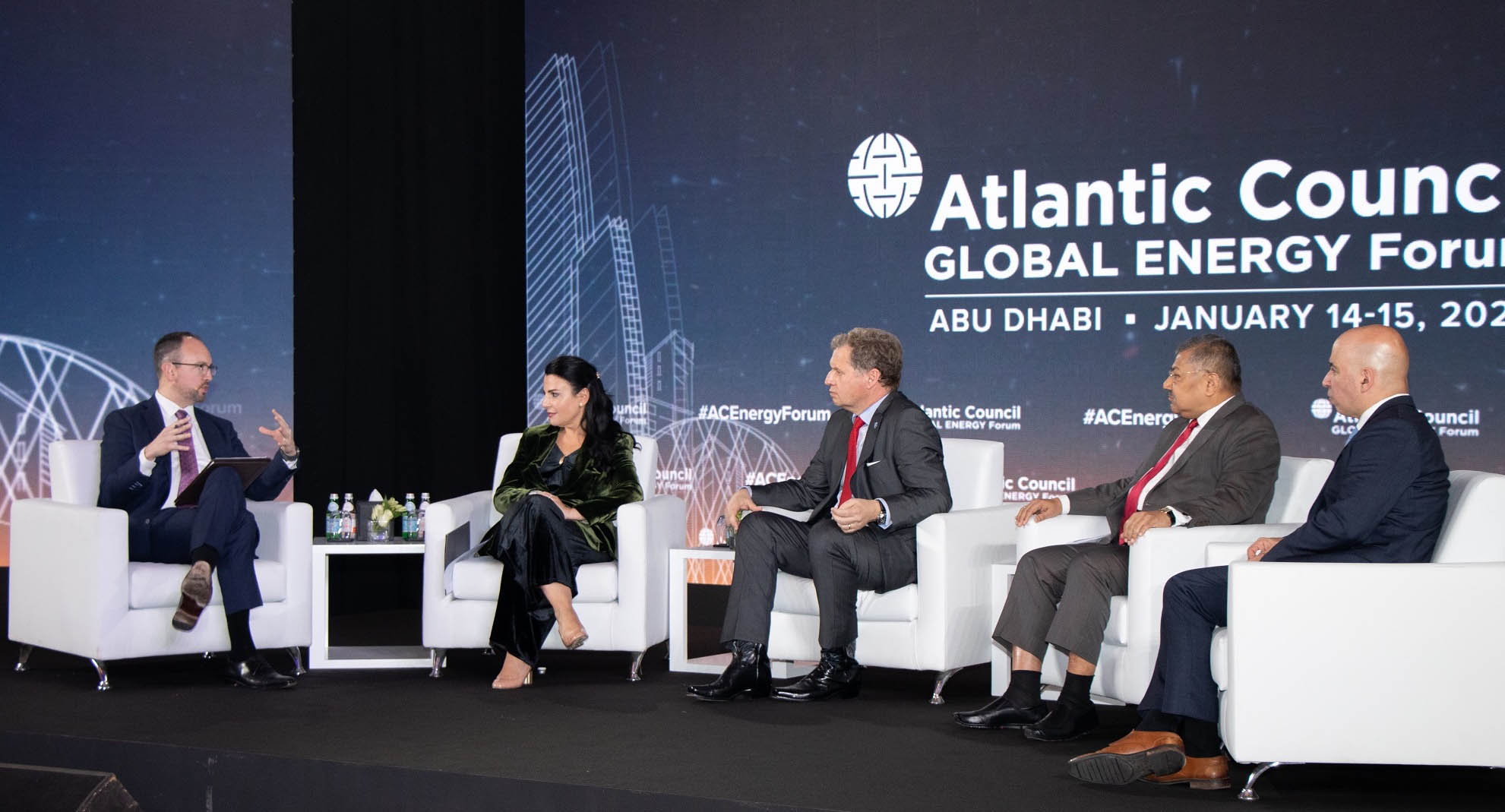In 2023, the United Arab Emirates is taking center stage in the global efforts to address climate change and sustainability. This past week, leaders gathered for Abu Dhabi Sustainability Week, kicking off a year of events leading up to the UAE-hosted COP28 at the end of the year. This momentum, following on the heels of the successful COP27 in Egypt — the “implementation COP” — will help continue driving positive action in emerging markets and globally for the decade to come.
The efforts that are the focus of these events align closely with two key priorities in 2023: electrification and decarbonization. Private industry and governments must partner to make progress on both goals in parallel: growing access to electricity while decarbonizing the energy, transportation, and industrial sectors.
Electrification
Entering the new year, access to reliable, affordable, and sustainable electricity is top of mind for billions of people globally — in a way that it has not been in decades. Nearly 775 million people lack access to electricity. However, even for those with more reliable access, extreme weather events, global conflicts, cyber threats, and growing demand are increasingly raising questions about the security of supply. At a recent White House summit, U.S. Secretary of Energy Jennifer Granholm said the United States needs a “tripling” in the rate of electrification and “new architecture.” Many nations are looking at similar goals.
Access to power is a core sustainable development right. As the global community takes important action for climate change — which includes placing increasing demands on the grid by electrifying other sectors — we must make the right investments to ensure everyone has access to the lifeblood services associated with electricity. Thus, setting the right path for electrification is a 2023 priority.

In many countries, work must begin now on grid digitization and modernization to make grids smarter and more robust. That means adding advanced distribution networks, hybrid systems, and energy storage to manage the complex grid requirements of tomorrow’s renewables-heavy grid, as well as the even longer-term multifaceted, multidirectional grids of a net-zero future. An essential part of building this grid is cybersecurity and digital defenses.
Modernizing transmission and distribution infrastructure means using the latest protection, control, monitoring, and diagnostic technologies and software to monitor the health of equipment across the system and better manage key infrastructure, such as substations.
In other parts of the world, it’s not just about grid resilience. It’s about building the grid in the first place. These new systems can feature world-class digitization and resilience systems, leapfrogging older transmission and distribution infrastructure.
Fortunately, while the risks are significant, so is the sense of urgency and action. The International Energy Agency says global investment in power grids should grow from $260 billion today to $820 billion in 2030. In 2022, GE saw nations increasingly prioritize grid infrastructure in unprecedented ways through investment. In 2023, the focus must be on how to deploy these commitments swiftly and strategically to ensure the grid is well positioned to meet growing demands and threats and to succeed in decarbonization goals.
Decarbonization
Building a more resilient grid enables success for the second priority: progress toward decarbonization goals. As a leading energy company, we think of decarbonization in two ways: (1) deploying diverse generating technology today to make progress in lowering both emissions and carbon intensity, while (2) investing in the breakthrough technologies of tomorrow to achieve net zero.
The near-term reductions are dependent on investing in a portfolio of renewable energy, efficient gas power, and advanced nuclear to reduce emissions while generating more electricity. Our overarching goal is to grow wind as quickly as possible and in increasing amounts over this decade. Growing support for nuclear and hydro energy such as pumped storage in policies around the world is also welcome. All these technologies contribute to decarbonization by enabling energy production while lowering greenhouse gas emissions.
Importantly, efficient gas power also has a strong role to play in decarbonization plans. Deploying gas is frequently the fastest way to reduce emissions while enabling a strong foundation for building renewables and other generation assets. Gas turbines have a pathway to decarbonization — both pre-combustion with hydrogen and post-combustion with carbon capture and sequestration. Egypt should be applauded for a strong emphasis on pathways to decarbonizing fossil fuel technology at COP27 — a theme we anticipate will continue at COP28.
While this diverse mix of assets will help decarbonize the energy sector this decade, these technologies will not be enough to meet net-zero goals. Research must continue on breakthrough technologies as well as implementation of pilot projects and full-scale deployments in areas such as low-carbon hydrogen and carbon capture utilization and storage (CCUS). Small modular reactors, an important technology for reliable, zero-carbon baseload electricity, also require more study and policy action to demonstrate government commitment and build public support for this safe, affordable, and nimble nuclear technology.
Taking Action in 2023 to Succeed for Electrification and Decarbonization
The start of a new year is always a time for reflection, for goal setting, and for optimism. The world is now three years into the “decade of action” on climate change, reinforcing the imperative for progress. For us to advance our goals of electrification and decarbonization, transitioning from discussion to implementation is essential. The actions we take now will set us up for success when we meet again in the UAE in November. In turn, that success will create the global momentum to carry us into future years, on a sustainable and equitable trajectory to deliver on a net-zero future for our communities and our planet.
Roger Martella is GE’s chief sustainability officer and vice president of GE Vernova Government Affairs and Sustainability.
This piece was first published in the Atlantic Council’s “2023 Global Energy Agenda,” available here. GE is a sponsor of the 2023 Atlantic Council Global Energy Forum.
